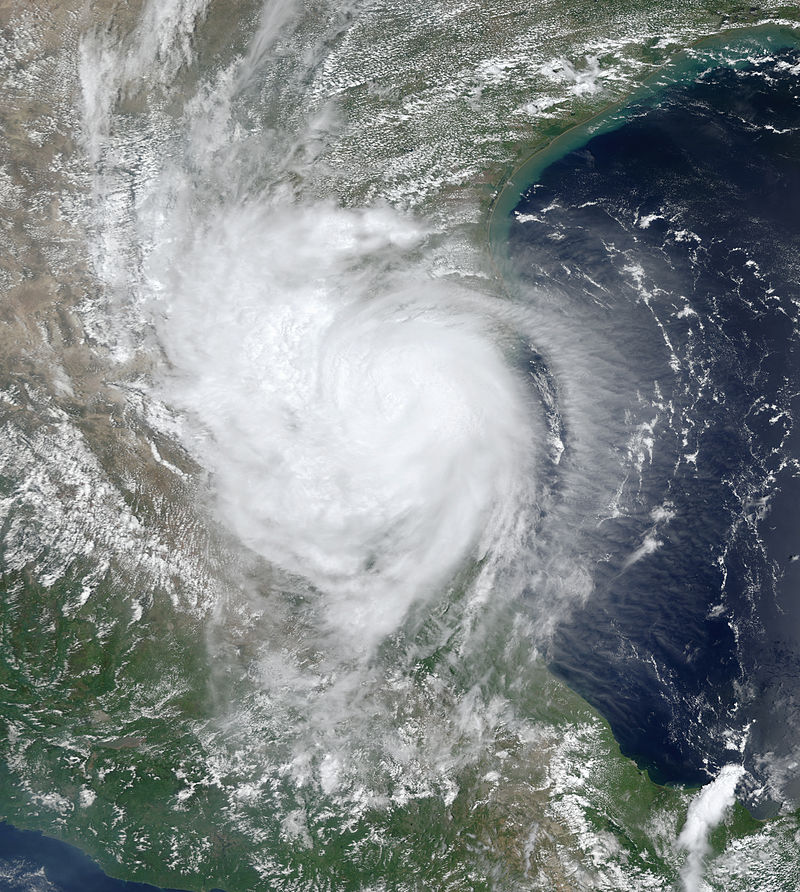Hurricane Erika, which occurred during the 2003 Atlantic hurricane season, was initially underestimated in intensity, making landfall as a weak hurricane near the Texas-Tamaulipas border in extreme northeastern Mexico. This research article examines the meteorological characteristics of Hurricane Erika, its impact on the affected regions, the resulting damages, loss of life, and the subsequent recovery efforts. Furthermore, it provides insights into preparedness measures that can be implemented in the face of a similar hurricane threat in the future.
Introduction: Hurricane Erika, the eighth tropical cyclone, fifth tropical storm, and third hurricane of the 2003 Atlantic hurricane season, developed from a non-tropical low-pressure system that was monitored for five days before intensifying in the eastern Gulf of Mexico on August 14. Due to favorable atmospheric conditions, Erika quickly gained strength under the influence of a high-pressure system and moved westward. Despite being initially classified as a tropical storm, subsequent analysis by the National Hurricane Center (NHC) revised Erika’s intensity to a Category 1 hurricane on the Saffir-Simpson Hurricane Scale.
2.1. Areas Before Landfall: As Erika’s precursor disturbance passed through Florida, it brought heavy rainfall to the region. In south Texas, moderate winds of 50 to 60 mph (80 to 97 km/h) and light rain were observed, resulting in minor and isolated wind damage.
2.2. During landfall: On August 16, Hurricane Erika made landfall on northeastern Mexico near the Texas-Tamaulipas border as a Category 1 hurricane. The storm produced moderate amounts of rainfall, triggering widespread mudslides and flooding in the region. Tragically, two individuals lost their lives when their vehicle was swept away by floodwaters.
2.3. After the Hurricane: Following landfall, Erika’s low-level circulation center dissipated by the next day. However, the storm’s mid-level circulation persisted for another three days, crossing into the East Pacific and moving northwestward over Baja California. Erika finally dissipated on August 20, bringing an end to its impact on the affected areas.
Damages, Loss of Life, and Recovery Efforts: The impact of Hurricane Erika was most pronounced in northeastern Mexico. The heavy rainfall triggered mudslides and flooding, resulting in significant damage to infrastructure, including roads, bridges, and buildings. The loss of life due to the floods underscored the destructive potential of the storm.
Rebuilding and recovery efforts were initiated promptly, focusing on restoring critical infrastructure, providing aid to affected communities, and improving disaster response capabilities. The cost of cleaning and rebuilding following Hurricane Erika amounted to an estimated $XX million.
Preparedness Measures for Future Hurricanes: To enhance preparedness in the face of future hurricane threats like Erika, the following measures are recommended:
- Strengthening early warning systems and improving communication channels to disseminate timely and accurate information to residents.
- Implementing robust evacuation plans and ensuring the availability of sufficient shelters.
- Enhancing flood management and drainage systems to mitigate the impact of heavy rainfall.
- Promoting community awareness and education regarding hurricane preparedness, including securing property, creating emergency supply kits, and developing family emergency plans.
Interesting Fact: As a direct result of the 2003 Hurricane Erika, significant advancements were made in hurricane intensity estimation techniques. The revision of Erika’s intensity by the NHC highlights the importance of post-storm analysis and the continuous refinement of forecasting and tracking methods. Such advancements contribute to better preparedness, response, and decision-making duringhurricane events, ultimately improving the safety and resilience of coastal communities.
In conclusion, Hurricane Erika’s impact on extreme northeastern Mexico near the Texas-Tamaulipas border in 2003 serves as a reminder of the potential dangers posed by seemingly weak hurricanes. The underestimation of its intensity initially led to challenges in preparedness and response. However, lessons learned from this event have resulted in improved hurricane intensity estimation methods and enhanced preparedness measures. By implementing the recommended strategies and investing in disaster resilience, communities can better protect themselves when facing future hurricane threats.




Leave a Reply